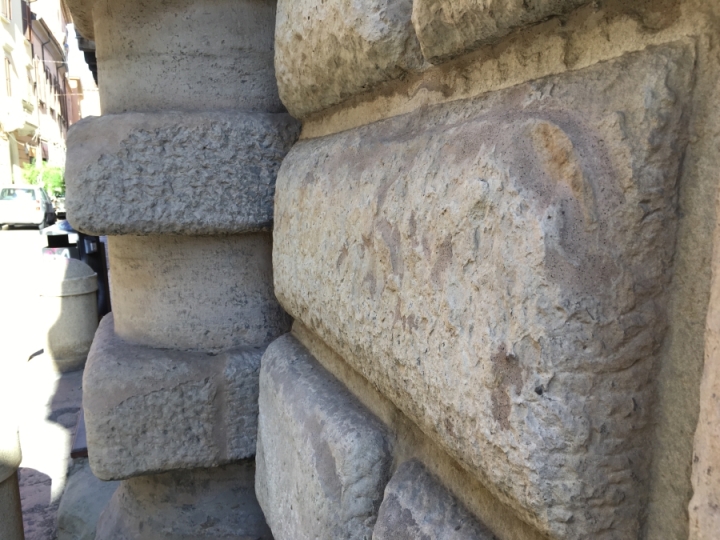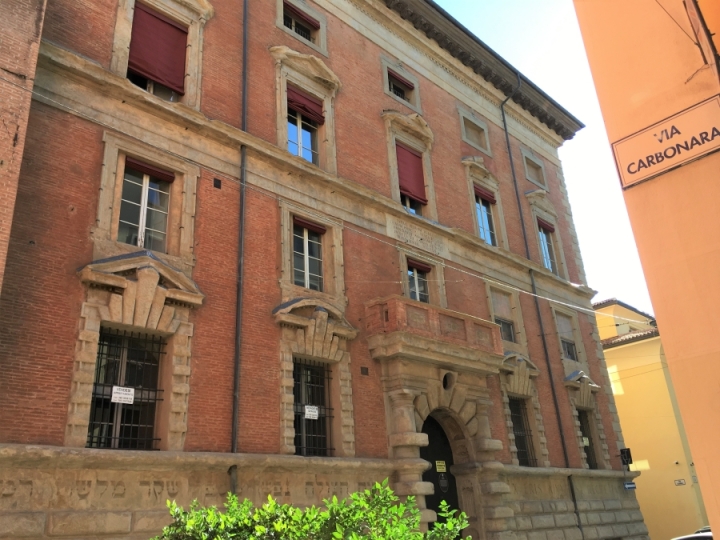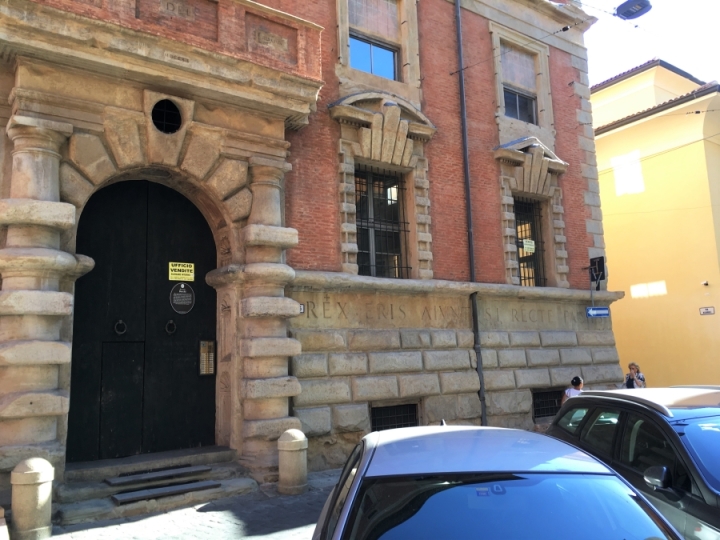At university, while studying Renaissance architecture, I wrote a paper on the origins, styles, and uses of rustication. Rustication is essentially the rows of tooled, raised stone often found at least on the ground level of buildings and sometimes around doorways and windows and the corners of buildings. It’s been around since classical times and showed up frequently in Renaissance architecture, unsurprisingly.

After the blood, sweat, and tears that went into that paper, I could have never wanted to think of rustication again or I could have fallen in love with it completely. In my case, it was the latter. Roommates at uni had to put up with me pointing it out everywhere and talking about it incessantly; parents have had it pointed out extensively; my dear friend who travelled to Italy with me the first time REALLY got the full brunt of my fascination; and G has had to watch me caress it lovingly. And now I have a blog so I can tell EVERYONE about it!
There are a variety of forms of rustication, especially as it developed and became more stylized over the years, but no matter the form, I’m a sucker for a good bit of rustication. So imagine my joy when I was wandering around town one day with Charlie, going wherever his nose directed us, when I came across two buildings facing each other with some truly fantastic rustication. Charlie soon grew impatient, but there was no dragging me away. I was going to soak it all in. I’m still trying to find out about one building, but I did find out about the other, which truly is a fascinating building in its own right: the Palazzo Bocchi (pronounced BOH-key; hear it here).
Achille Bocchi
The palazzo was commissioned by Achille Bocchi, an Italian humanist writer, emblematist, historian and lecturer in Greek, poetry and humanae litterae at the University of Bologna. He lived 1488-1562, and his best-known book, written in 1555, was Symbolicarum quaestionum de universo genere. I love the following description of it:
[It] “takes as its subject the whole of universal knowledge: physics, metaphysics, theology, dialectic, Love, Life and Death, packaging them under the veil of fables and myths.”*
Life, the universe, and everything else, indeed!
Palazzo Bocchi
Bocchi commissioned the palazzo design in 1545/6 from Giacomo Barozzi da Vignola, one of the great Mannerism architects and also a native of Bologna. Vignola was responsible for the Villa Farnese in Caprarola and is grouped with Palladio and Serlio as the three main architects who spread the Italian Renaissance architectural style throughout Western Europe. Nice company to keep!

Bocchi soon turned his palazzo into the home of his Hermatena Academy. The name is the combination of Hermes and Athena, as Hermes was the god of eloquence, and Athena was the goddess of wisdom, arts and science. An appropriate combination for his interests.
I haven’t seen the inside, but it includes frescoes by Prospero Fontana, a Bolognese artist important in his own right, who also painted frescoes in the Palazzo Vecchio in Florence.
However, I have seen the outside and the wonderful Bolognese colors, along with the truly eye-catching rustication. The rustication runs along the base, up to the bottom of the windows on the first level. They are fairly typical rectangular raised stones that are slightly rounded and rough in texture, placed in even rows, much like brickwork, but on a much larger scale. Interestingly, the columns around the door and the frames around the first level windows are also rusticated, as are the corners (quoins). It is typical in these instances to leave space between the rusticated blocks.

Hebrew and Latin
What really makes this building so unusual are the inscriptions within the Palazzo Bocchi rustication on the facade. It is uncommon to have anything written into the rustication in this manner, and in this case, one side is in Hebrew and the other in Latin. The Hebrew side is a verse from Psalm 120: “Deliver me from the liars, God! They smile so sweetly, but lie through their teeth.” The other side, in Latin, comes from Horace’s Epistle 1: “Rex eris, aiunt, si recte facies” (Do well, thou shalt be crowned).


The Palazzo Bocchi is located at Via Goito 16, but it does seem to be a private building at this point, or at least not specifically open to the public. It’s worth a visit, though, just to see the exterior and some of the other buildings on the street. Via Goito on one end leads onto Via Oberdan, which is home to a variety of shops and restaurants and leads out onto Via Rizzoli, another major street that takes you to the two towers or to Piazza Maggiore. And really, no matter where you end up wandering, you’re sure to run into some beautiful buildings.
*John Manning, The Emblem (2002) p.114.

